- We reveal the EVs with the best and worst efficiency – which should you buy?
Some electric cars are massively less efficient than others, a study has shown.
What Car?’s latest real-world test highlights the vast difference in electric car range efficiency, and how drivers could be forking out hundreds of pounds in charging costs by choosing an inefficient model.
We reveal which electric cars are the most and least efficient – the one’s to snap up and the ones to avoid, and how to calculate efficiency if you’re shopping for an EV.
SCROLL TO THE BOTTOM TO FIND OUT WHICH NEW EV IS THE MOST EFFICIENT

The measure of how efficient an EV is is the miles per kWh figure. This is the equivalent to miles per gallon, for fuel cars, so the higher the score the more efficient the EV is.
What Car? drove a selection of EVs from fully charged to flat to see how far they could really travel on a full charge, and how well they use the electricity stored in their batteries – a real-world test of EV efficiency.
Not only did the results demonstrate which EVs had the best battery efficiency, but they also revealed that choosing the wrong model that’s not efficient can end up costing you a staggering £838 extra every 10,000 miles.
11. Audi Q6 e-tron Launch Edition
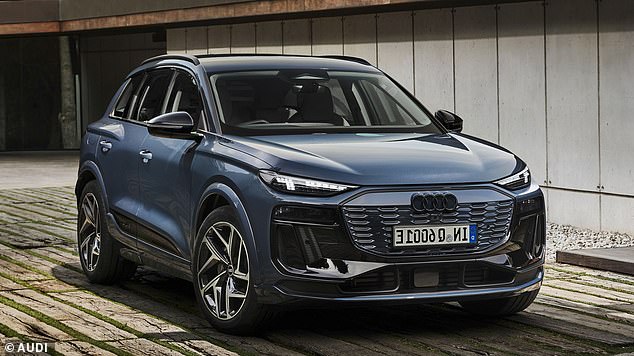
The least efficient EV was the Audi Q6 e-tron which only had a calculated efficiency of 3 miles per kWh.
The Q6 e-tron has a usable battery capacity of 94.9kWh and an official range of 344 miles. But during the test What Car? Found it only travelled 289 miles on a full charge – a shortfall of 16 per cent.
10. Kia EV9 RWD Air
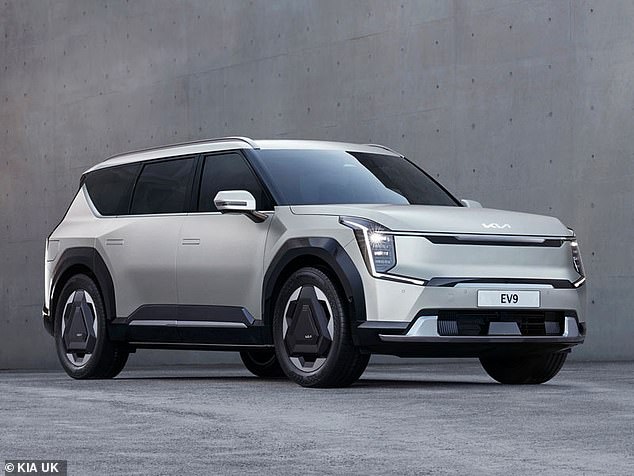
The second worst performing EV was the Kia EV9.
The Kia EV9 is the South Korean brand’s flagship luxury new electric SUV, with the Air costing from £64,245, but its calculated efficiency doesn’t stack up to the official figures.
The calculated efficiency was only 3.3 mi/kWh.
While its 96.0kWh battery is supposed to allow it to travel 349 miles on a single charge, in reality it only travelled 314 miles – a shortfall of 10 per cent.
9. Renault Scenic E-Tech Long Range Techno
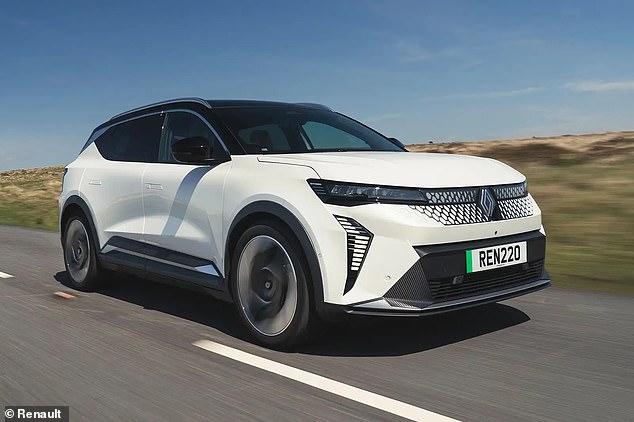
The Scenic E-Tech comes in joint place with the Cupra Born – both on 3.7 miles per kWh.
The Scenic E-Tech has a usable battery capacity of 87.0kWh and an official range of 379 miles. When What Car? Drove it to exhaustion it managed 322 miles – a shortfall of 15.2 per cent.
The E-Tech is significantly cheaper than the Kia EV9, costing from £40,995.
8. Cupra Born VZ
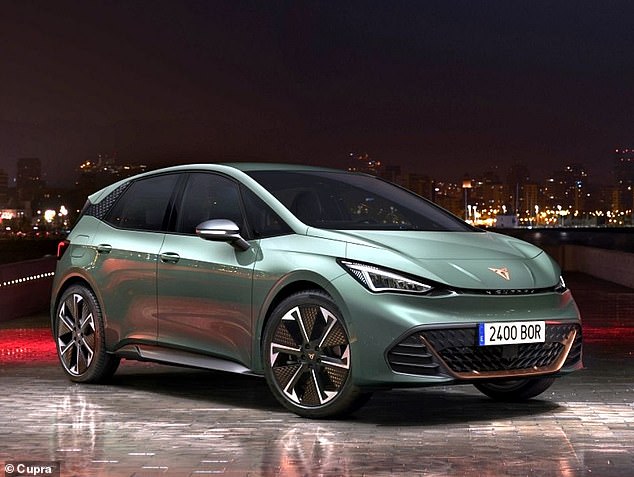
As mentioned, the Cupra Born electric hatchback had the same calculated efficiency as the Renault Scenic E-Tech – 3.7 mi/kWh – when tested by What Car?
The Born has a 79.0kWh battery and can theoretically manage 334 miles on a full battery. But the real-world test found it managed 294 miles instead.
That meant its range shortfall was 11.9 per cent.
7. Volvo EX30 Single Motor Extended Range Ultra
The EX30 is Volvo’s cheapest electric offering, with the SUV starting from £32,850.
After undergoing the What Car? Test the 64.0kWh battery car managed 242 miles before it ran out of juice. Its claimed range however was 295 miles.
That puts its shortfall at 17.9 per cent and its calculated efficiency at 3.8 miles per kWh.
6. BMW i5 eDrive40 M Sport Pro
We’ve got another joint entry, with the BMW i5 and Volvo EX30 battling for 7th and 6th place.
We’ve put the BMW i5 in 6th place because its range shortfall was less than the Volvo’s.
The i5 has an 81.2kWh battery and a claimed range of 338 miles.
When driven until the battery died, the i5 managed 310 miles – a shortfall of just 8.1 per cent.
The calculated efficiency was also 3.8 mi/kWh.
5. Hyundai Kona Electric Ultimate
The Hyundai Kona is a very well-known electric car and is one of the more affordable ones.
With its 65.4kWh hour battery, the Kona should manage 282 miles on a single charge.
However, after being tested it managed 255 miles instead – a shortfall of 9.7 per cent.
Its calculated efficiency is 3.9 mi/kWh.
4. Peugeot e-308 SW GT
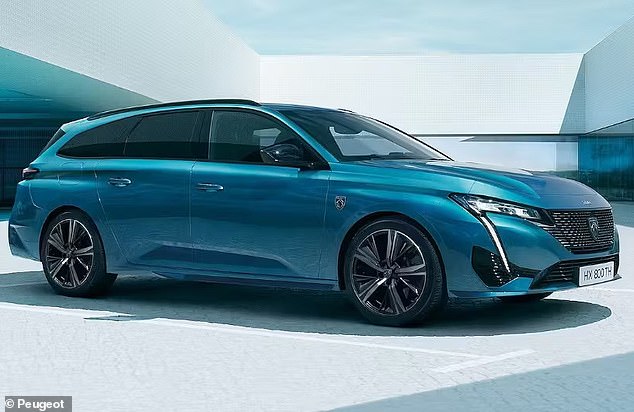
Now we’re jumping up into the 4 mi/kWh-plus groupings. And there’s another tie.
So, in fourth place is the Peugeot e-308.
With a 50.8kWh battery its official range stands at 254 miles. But the test found it managed only 212 miles – a shortfall of 16.7 per cent.
This puts the e-308’s calculated efficiency at 4.2 mi/kWh.
3. Polestar 2 Long Range Single Motor
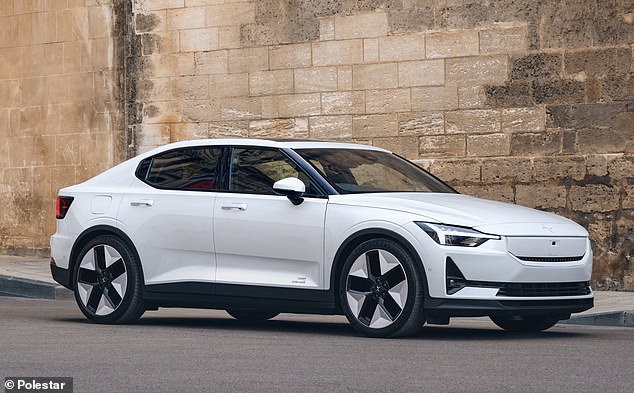
Also managing a calculated efficiency of 4.2 mi/kWh was the Polestar 2 Long Range Single Motor.
The claimed range on the revised 2 is a massive 406 miles. However while it didn’t manage this – it covered 333 miles, which is a shortfall of 18 per cent – it did go further than any other electric car on the testing day.
And to show how far electric battery technology has come, and how quickly it is improving, the Polestar 2’s result is also the furthest any EV has managed during the history of What Car? range testing.
The 333 miles is enough to drive from London to Nottingham and back without having to stop to charge.
2. Mini Cooper SE Exclusive (Level 2)
In second place is the Mini Cooper SE Exclusive.
The EV has a 49.2kWh battery and a claimed range of 242 miles. During the test it covered 211 miles which leaves it with a shortfall of 13 per cent.
The calculated efficiency is 4.3 mi/kWh.
1. Tesla Model 3 RWD

In first place, taking the efficiency trophy is the Tesla Model 3 RWD.
The former best-selling EV in the UK has a calculated efficiency of 4.4 mi/kWh.
To claim its crown the 57.5kWh battery car drove 255 miles of its 318-mile claimed range – a shortfall of 19.7 per cent.

How much will the disparity cost you?
Based on its real-world test results What Car? worked out that if you charge at home on a standard tariff and pay 22.4p/kWh (the current Ofgem electricity price cap) then you’d spend roughly £508 on electricity every 10,000 miles in the Tesla Model 3.
However if you get the far less efficient Audi Q6 e-tron you’d be paying a heftier £745 every 10,000 miles.
Alternatively, if you did all your charging at a much more expensive public rapid charger, you could pay around 79p per kWh.
This would mean that the bill for a Tesla Model 3 would rise to £1,795, but for the Audi Q6 e-tron it would be a whopping £2,633.
This shows that buying an EV with the best efficiency score is one of the best ways to save money on running costs.
What Car? editor Steve Huntingford commented: ‘Only a few years ago, when electricity was cheap and any electric car cost far less to run than an equivalent petrol or diesel model, efficiency didn’t seem to matter that much. However, with energy prices high and due to rise further, it’s now an important consideration.’
How were the new EVs tested in real-world conditions?

What Car? used the Horiba-MIRA proving ground in Warwickshire, where it could run EVs out of charge in a safe environment.
In each test case, the climate control system was set to 21 degrees and Eco (or the closest equivalent) driving mode was selected.
Then, the cars were repeatedly driven around a 19.2-mile test route, which included 2.7 miles of simulated stop-start urban driving, 5.5 miles at a steady 50mph and 11 miles at a constant 70mph.
The rationale for the high percentage of high-speed cruising is that drivers who want to travel long distances in one hit are likely to be using the motorway network.
Driver changes and a switch in running order were carried out at the end of each loop. And the temperature during testing ranged from 17 to 23 degrees Celsius.
How do you calculate your EV’s efficiency?

As the nation gradually transitions to EVs – there are already more than a million on UK roads – fuel MPG is becoming less and less relevant as a new figure takes over: miles per kWh.
So, what is miles/kWh and how do we calculate it? You can read our full guide to working out economical an EV is, but here’s a quick overview:
The calculation you need to know: Divide the combined range figure by the usable (net) battery size to get the mile/kWh of your EV.
You can find the combined range figure in the specifications and will usually have WLTP (World Harmonised Light Vehicle Test Procedure) alongside it, which represents the real-world range test all new EVs are required to take.
KWh refers to the battery size of the EV, and is equivalent to engine size in a fuel car.
The kWh figure is a ‘net’ capacity figure because manufacturers keep some battery power in reserve to protect the cells, so make sure this is the figure you use to calculate efficiency rather than the ‘gross’ number.
Is battery degradation a real concern?
To help answer this What Car? also tested a nine-year-old Tesla Model S with 258,000 miles on the clock.
The test was set out to to see if concerns around battery longevity are justified. And the answer was overwhelmingly no.
Despite the Model S still being on its original battery and having covered a staggering almost 260,000 miles (effectively travelling to the moon), the test showed the Model S had lost just 8 per cent of its original capacity.
This is Money recently reported that Geotab – a leading firm in fleet and business telematics – had found EV batteries show slower signs of degradation than components used in internal combustion engine (ICE) cars.
The company says it has carried out analysis of the battery health of almost 5,000 fleet and private EVs, using 1.5 million days of telematics data to explore how the latest battery technology holds up to the rigours of daily use.
The data suggested that EV batteries in current models degrade, on average, by 1.8 per cent annually.
When it carried out the same study back in 2019, it found that the efficiency of batteries was declining at a rate of 2.3 per cent per year on average, suggesting advances have been made in the last five years to extend the lifespan of the technology.
The report went on to say that EV batteries now ‘generally degrade more slowly than internal combustion engine drivetrain components’.


